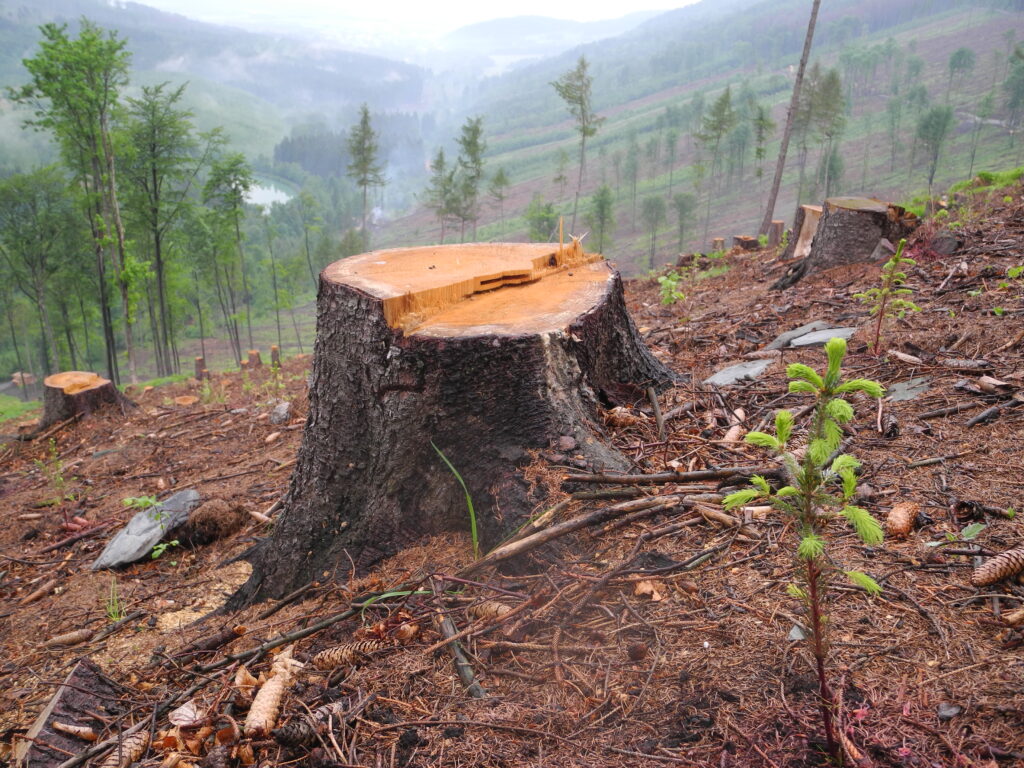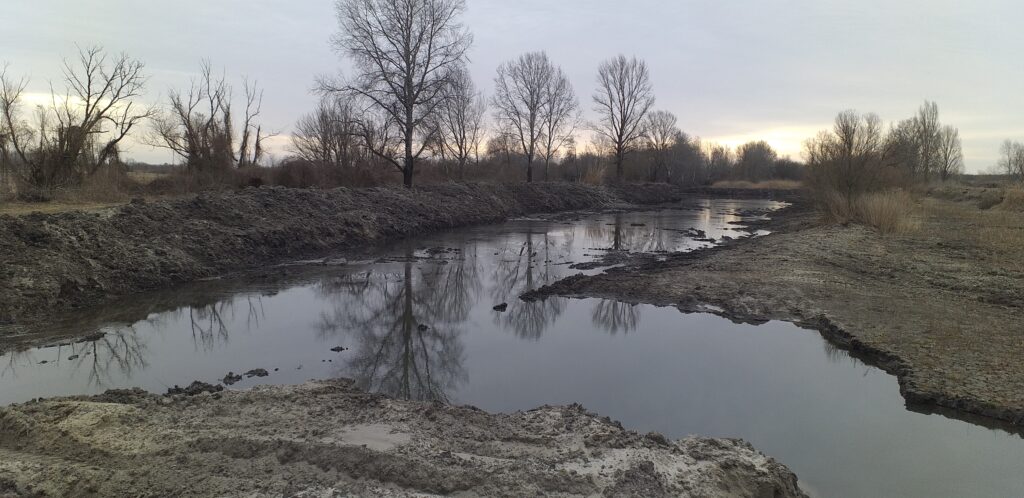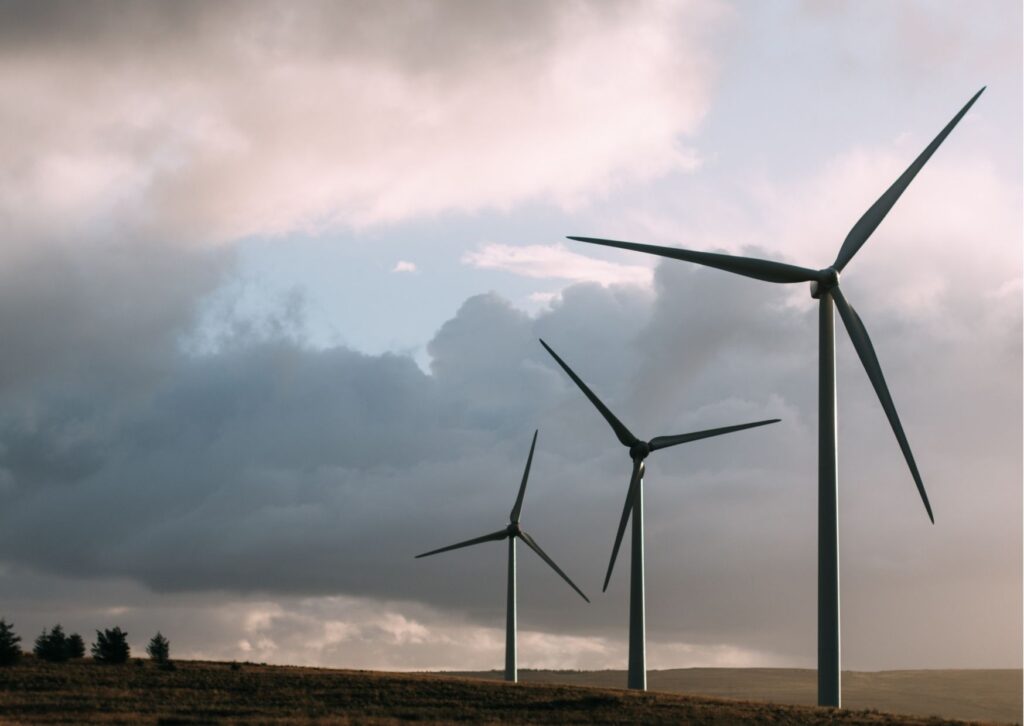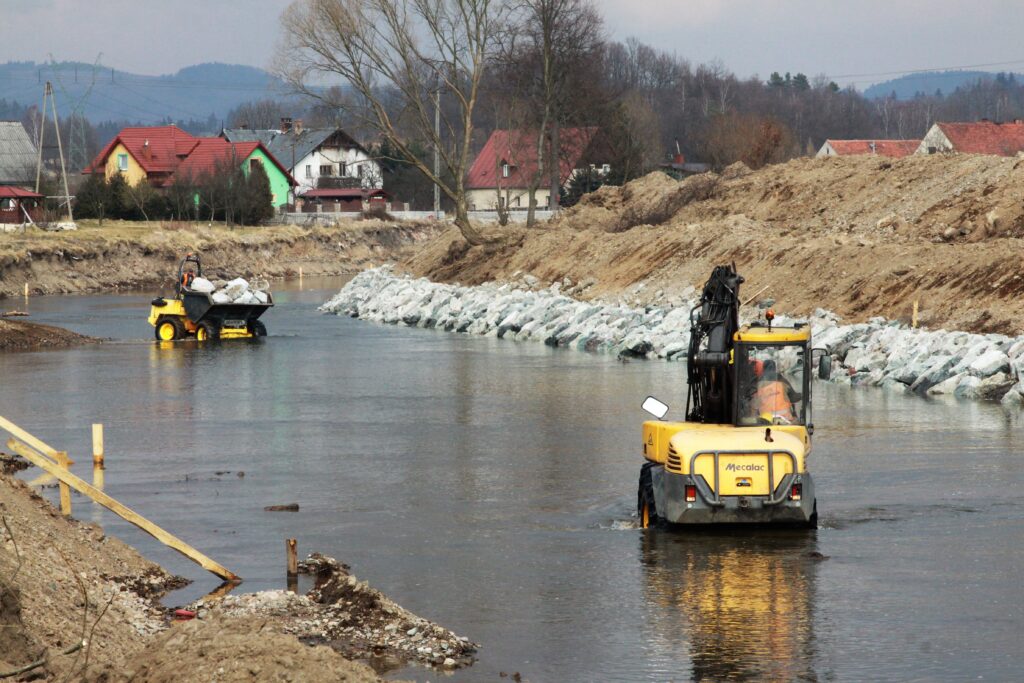Behind the ‘green recovery’
How the EU recovery fund is failing to protect nature and what can still be saved
Biodiversity is key to our very existence. We depend on healthy ecosystems for our food, air, water and climate. Moreover, the cost of failing to address the biodiversity crisis vastly outweighs the investments needed.
The EU’s Recovery and Resilience Facility (RRF), an emergency fund developed in response to the financial crisis caused by the COVID-19 pandemic, provides Member States with an extraordinary EUR 672.5 billion to facilitate a green European recovery. However, rather than using this as an opportunity to protect and restore biodiversity, our analysis shows Member States’ recovery plans will harm nature.
The following case studies reveal harmful reforms and investments set to receive EU recovery funding in nine central and eastern European Member States.
Through these examples, we aim to prevent and/or mitigate the harm they may cause, as well as to ensure similar projects do not receive EU funding in the future.
![]()
![]()
Renewable energy in Bulgaria: have the lessons of the past been learnt?
Bulgaria’s recovery plan includes investments in renewable energy sources. Although the deployment of renewable energy should be supported, it is crucial to develop renewable projects in a way that does not negatively affect valuable natural habitats.
However, the plan lacks details and information about how and where such projects will be implemented. This is particularly important given Bulgaria’s history of non-compliance with nature conservation laws in developing renewable energy, as well as a series of ongoing infringements and investigations related to this.
For example, the renewables measure in the recovery plan does not list which specific sources will be supported, but mentions photovoltaics, wind turbines and the use of water and marine resources. The project gives limited information about how investments in these renewable energy sources will limit the destruction to biodiversity, Natura 2000 sites and protected areas.
The development of renewable energy projects is very much needed and is a positive measure included in Bulgaria’s recovery plan. But from a very early stage, the government must clearly establish that renewable projects must avoid sensitive natural habitats.

A griffon vulture killed by wind turbines at the Kaliakra site in Bulgaria | Chavdar Nikolov, Bulgarian Society for the Protection of Birds
Croatia: disaster risk reduction programme or a disaster for biodiversity?
Croatia’s national recovery plan includes a measure on ‘disaster risk reduction’, which consists of a flood risk reduction programme and projects for the revitalisation of freshwater systems. Five revitalisation projects envisioned in this measure are intended to revitalise 27 kilometres of watercourses. The only eligible applicant for this call is Hrvatske vode, the state company responsible for water management, which triggers questions about the relevance of a public tender.
The types of activities that are eligible for funding suggest that this investment could be highly damaging for biodiversity, since the activities include watercourse regulation, riverbank stabilisation, reconstruction and building of new embankments, and construction of water structures (retention reservoirs, pumping stations, connecting channels, culverts, etc.). This is not true revitalisation, but mere flood protection.
At least eight out of the 11 projects selected were not required to first go through full environmental impact and appropriate assessments, based on the results of screening procedures, although at least four of them are inside Natura 2000 sites.
The recovery plan is a missed opportunity to truly modernise the way water is managed in Croatia, and to secure substantial funding for ecosystem restoration projects, which are still in their infancy. More of the budget for this measure should have been designated for revitalisation, as opposed to flood protection projects.

Common tern breeding on a gravel bank, Goran Šafarek
Czech forestry: the devil is in the details
The Czech Republic’s recovery plan includes a component which aims to ‘improve the resilience and at the same time the state of forest ecosystems restored after the bark beetle calamity’. Czech forests have been heavily impacted by climate-change-related drought and heat. Since 2015, a bark beetle infestation has decimated spruce monocultures.
The subsidies are in principle the right step, one that forest owners and environmental organisations have long called for. The optimal procedure for regenerating forests in clearings is to use preparatory (pioneer) trees (e.g. birch, rowan, alder, willow, aspen) as much as possible. However, the criteria for obtaining this financial assistance do not motivate the recipients to create forests that encompass a variety of species, ages and space-diversified stands. This means they do not ensure the forests are truly resilient to climate change.

Logging of spruce, Hnutí Duha
Estonia: value enhancement of bioresources risks exacerbating damage to ecosystems
The investment focused on green technologies in Estonia’s recovery plan aims to promote resource efficient green technologies for industries and value enhancement of bioresources. The measures aim to improve the current low levels of resource and energy efficiency. However, civil society groups fear that a new pulp and paper factory could be counted as a biomass value enhancement project.
Although helping resource-intensive industries innovate so that they use fewer resources may be a noble goal, the measure does not actually guarantee an end to growing resource use and the corresponding environmental damage. This measure may even further exacerbate the biodiversity loss resulting from excessive logging in Estonian forests. Forest habitats, fragmented and ravaged due to clearcutting, are not sufficiently protected, even by existing legislation or by being part of the Natura 2000 network.
Despite warnings from environmental organisations regarding the potential impact of increasing efficiency on the demand for resources, the measure lacks any safeguards to restrict overall resource use. Although the efficiency of the resource may be improved per unit – meaning the company will get more money out of the same amount of the resource – this is not guaranteed to decrease overall resource use.

Biodiversity-rich forest habitat in Paunküla Landscape Conservation Area, Katre Liiv
Homokhátság – an end of pipe ‘solution’ to desertification
Since its submission on 12 May 2021, Hungary’s national recovery plan has still not been approved by the European Commission.
The draft recovery plan includes one project within the water management component that intends to solve the desertification of a drought-ridden area by delivering water from the Danube.
Homokhátság (meaning ‘sandy uplands’) is a region between the Danube and Tisza rivers that covers approximately 10,000 square kilometres. The desertification is caused by ill-conceived water management infrastructure, land use, climate change, and illegal groundwater use. Serious water scarcity is causing biodiversity and agricultural loss.
During the public consultation process of the plan, conservation experts reiterated that increasing water supply to the region should only come after radical land-use change and after water retention capacities have been maximised. Increasing water supplies to farmers sustains existing practices and hinders initiatives for change. Agriculture and nature conservation will likely compete for water resources.
The planned measure appears to be the most expensive but least effective way of tackling desertification – trying to relieve the symptoms without addressing the causes.

Example of a small-scale project to tackle water scarcity, Dongér-Kelőér Vize Egyesület
Latvia: high risk flood prevention projects
Despite numerous objections from environmental civil society organisations, 29 potentially harmful flood prevention projects were included in Latvia’s recovery plan. These include the renovation of polder pumping stations, protective dams and regulated sections of rivers.
Any wetland drainage activities, including the planned flood prevention projects, are very much at odds with EU nature protection and biodiversity policy in terrestrial and aquatic ecosystems. Drainage of wetlands means significant changes in natural water levels that eventually lead to the degradation of natural habitats and loss of species. This negatively affects ecosystems’ capability to accumulate water during floods and to retain CO2 from the atmosphere.
Wetlands and mire habitats play an important role in carbon sequestration and ensuring good water quality. Therefore, any flood prevention activity needs to be carefully assessed in the context of climate change, biodiversity protection and water quality requirements.
Only 10 per cent of Latvia’s habitats of EU importance are in good conservation status. This is even lower than the average EU level of 15 per cent. There is a risk that the implementation of the planned flood prevention projects will further aggravate this situation.

Example of a similar flood prevention measure next to the border of Natura 2000 site | Ilze Priedniece
Latvia: un-assessed wind farms
The final version of Latvia’s recovery plan includes an unexpected new measure – support for the promotion and building of wind parks on state forest land, without specifying particular locations.
Wind farms in forests may have a negative impact on biodiversity, including forest habitats of EU importance and protected bird species. Moreover, the potential of intensive agricultural and other non-forest lands as well as offshore areas for building wind energy parks is not even close to being exhausted. Therefore, it is worrying that priority is now given to the development of such infrastructure in state forests instead of choosing intensive agricultural land, where the establishment of wind parks would have fewer potential impacts on the environment and biodiversity.
As the development of wind farms in state forests was not even included in the draft recovery plan, it was not open for public discussion, or for any pre-assessment. No ‘do no significant harm’ assessment was done for this investment at all. This is not acceptable for potentially large-scale investments that can significantly affect the environment and biodiversity, including habitats and species of EU importance.

Poland: river death by a thousand cuts
Poland’s recovery plan has not been approved yet due to Poland’s failure to comply with the European Commission’s stipulations on the rule of law.
A planned water management measure with multifunctional hydro-technical investments will finance the construction, reconstruction and expansion of water management facilities like reservoirs, dams, gates and weirs in rural and forest areas across Poland.
Around 77,000 barriers already block Polish rivers, and this measure will further block them with new ones. Ecological connectivity is one of the most important factors for biodiversity in rivers, so already damaged aquatic environments will be put under additional pressure by the construction of new dams.
This will lead to the mass deterioration of river ecosystems in Poland by changing river valleys into reservoirs, disrupting the ecological continuity of rivers and their valleys, and reducing rivers’ self-cleaning capacity. Such projects may pose serious threats to biodiversity, including for protected habitats and animal species important to the EU.

Bóbr river regulation which destroyed habitat of trout and protected European bullhead species, WWF Polska
Romania: afforestation doomed to fail unless deforestation and corruption tackled
Romania’s recovery plan includes an investment that aims to create and restore forests in areas vulnerable to climate change. Particular attention will be paid to areas where forest habitats have been degraded by illegal or uncontrolled logging in Natura 2000 protected areas.
Deforestation caused by illegal logging is one of Romania’s main environmental problems. In 2020, the European Commission found that the Romanian authorities manage forests without evaluating beforehand the impacts on protected habitats as required under the Habitats and Strategic Environmental Assessment Directives. To ensure the effectiveness of any measures and a coherent approach to forests in Romania, new forests cannot be financed while existing protected forests are being cut down.
No official information is available about reforestation plans for these clear-cut parts of protected areas, even though reforestation is legally mandatory after clear-cut logging. The measure lacks precise information regarding the projects, which makes it very difficult to carry out a ‘do no significant harm’ assessment.
In addition, experience from previous projects casts doubt on the likelihood of reforestation even being carried out, as money for such projects has been known to disappear with no results.
Planned afforestation and reforestation measures make little sense in Romania unless coupled with measures to stop illegal and unsustainable deforestation, as well as measures to improve enforcement and decrease corruption throughout the sector.

Clearcut logging in Maramureș Natural Park, Natura 2000 site, Agent Green
Slovenia: forest resilience or just more timber?
58 per cent of Slovenia is covered by forests, making it one of the most forested countries in Europe. One reform in Slovenia’s recovery plan aims at positive forest restoration and mitigation of climate change, as well as promoting resilient, biodiversity-rich forests in Slovenia. Alongside this reform, there is only one other biodiversity-labelled measure in the entire plan: the construction of a Centre for Seeds, Nursery and Forest Protection (Seeds Centre).
Despite the positive-sounding goals, our analysis of the measures suggests that the intention of these plans is to intensify forest exploitation. Although the recovery plan claims that the Seeds Centre will contribute to resilient, biodiversity-rich forests, the Common Agricultural Policy programme (which will co-fund the project) describes how the operation of the centre is actually the first link in the forest-timber chain and the basis for a more stable and long-term supply of raw materials for the timber industry. By subsidising new forest road infrastructure, in combination with technologically advanced machinery, these measures would promote felling in previously unopened stands that are too remote and unreachable by current technology.
In order to achieve resilient and biodiverse forests, thereby mitigating climate change and climate-related disasters, the government could instead propose additional funds for the existing Forest Fund. These funds would be used to purchase private forest land that would later be designated as forest nature reserves and exclusively intended for nature protection and, where reasonable, conservation practices to improve forest ecosystems would be applied.

Primary forest in Natura 2000 SPA Krakovski gozd | Alen Ploj

This publication has been financed by the MAVA Foundation.
